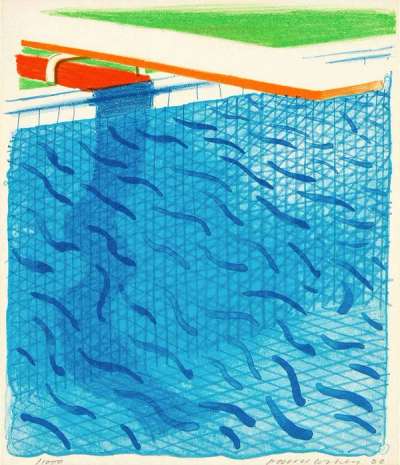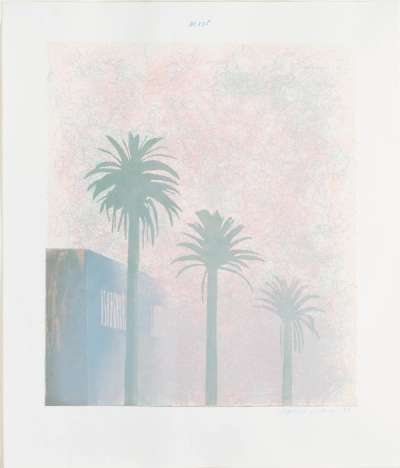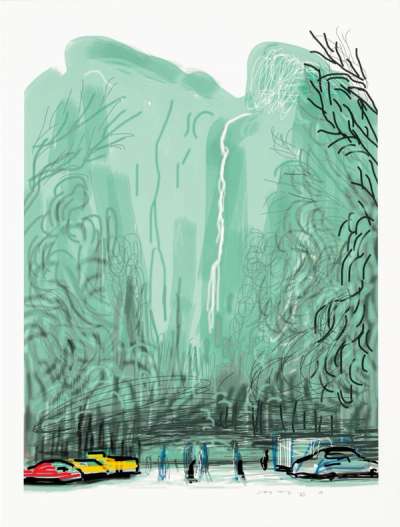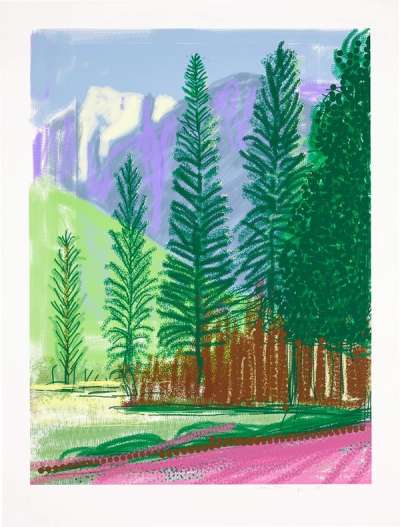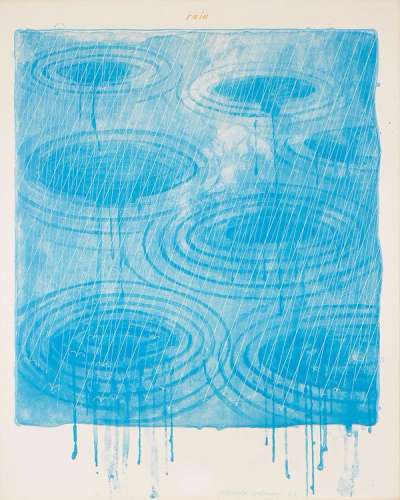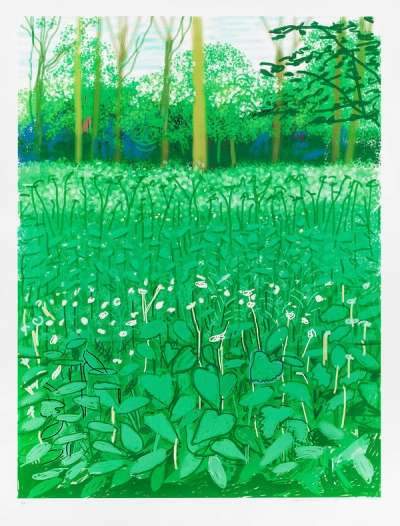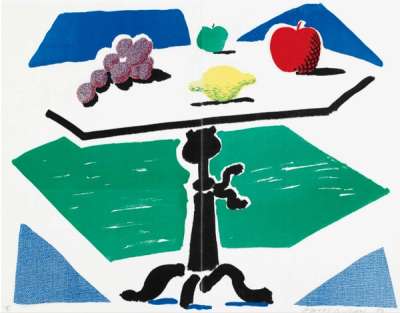David Hockney: Investable Prints & What's Next

 The Yosemite Suite 22 © David Hockney 2010
The Yosemite Suite 22 © David Hockney 2010
David Hockney
654 works
In the ever-evolving landscape of Modern British art, David Hockney stands out as a luminary - particularly in the prints and multiples market. In this episode of MyArtBroker Talks, Charlotte Stewart and Jasper Tordoff, our Hockney Specialist, delve into the Hockney market as it stands in 2024, highlighting the most investable pieces in his extensive portfolio. While looking to Hockney’s perpetual innovation, Jasper also provides invaluable advice for collectors looking to navigate the vibrant and intricate world of Hockney's prints.
Hockney, a titan in the realm of modern art, is celebrated not only for his versatility but also for his relentless pursuit of innovation. Printmaking, a significant facet of his artistic repertoire, captures the essence of his creative evolution. Hockney's journey through printmaking is a fascinating one, beginning with his early etchings that heralded his arrival on the art scene. He then ventured into the realm of Xerox photocopier prints, pushing the boundaries of conventional printmaking. His foray into photo collages further showcased his experimental spirit. The transition to iPad drawings in the 2010s marked another pivotal point, highlighting his adaptability and continuous exploration of new mediums. Through his prints, collectors are offered a unique opportunity to trace the lineage of Hockney’s distinct vision and his extraordinary way of perceiving the world around him.
Hockney's Digital Evolution: The iPad Drawings
Continual reinvention has been the cornerstone of Hockney's ongoing artistic career. With his ceaseless embrace of new media, Hockney's experimental prints have sometimes been met with scepticism - something we saw particularly with the iPad works. However, Jasper highlighted the significant shift in perception over time, noting that the appetite for Hockney's iPad works has grown exponentially, often surpassing the available supply. Despite these works being part of larger edition sizes, their rarity in the market speaks volumes about their desirability.
New technologies have also had a profound impact on Hockney's creative process at large. The ease of working en plein air and the vibrancy achievable with digital tools have allowed Hockney to create works with a depth and impact that initially surprised critics. This evolution in Hockney's artistic method underscores his ability to embrace and master new mediums, continually reinventing his style and challenging conventional art market norms.
Navigating the Hockney Print Market as a Collector
Hockney's prolific and long-spanning career in printmaking, there are lots of different ways to enter the market according to Jasper. He suggested various entry points for collectors, each offering a unique perspective into Hockney's artistic journey. For those drawn to iconic imagery, Tordoff recommended Hockney's ‘hero series,’ like the Swimming Pools, which are among his most acclaimed works. However, he also pointed out alternative paths for entering the market:
- Early Lithographs: Collecting Hockney's lithographs from the 1950s and 1960s offers an insight into his formative years.
- Innovative Experiments: Exploring Hockney's Xerox photocopy prints from the Home Made Prints series or his Japanese woodblock-inspired prints from the 1973 Weather Series can provide a sense of his experimental phase.
- Contemporary Creations: For those interested in Hockney's more recent endeavours, his iPad works, such as The Yosemite Suite and The Arrival Of Spring series, represent his latest artistic expressions.
Discussing price points, Jasper explores the wide range available in Hockney's prints. Early lithographs and etchings, typically from smaller edition sizes, can be acquired for approximately £10,000 - £25,000. Middle-range collections, such as The Weather Series and Celia Birtwell prints, offer another level of entry. The high-end market is dominated by iPad drawings, which, due to their rarity, start around £30,000 and can exceed £100,000.
Hockney holds a unique position in the art market, offering a broad spectrum of works at various price points. This diversity creates a welcoming environment for collectors at all levels, presenting opportunities to engage with Hockney's prints regardless of their budget or entry point preference.
Unearthing Hidden Gems: Overlooked Investments in the Hockney Market
Within Hockney's extensive portfolio, the artist’s earlier prints are among his more under-appreciated. Jasper highlights A Rake’s Progress as a particularly overlooked investment opportunity. He pointed to a notable auction event in 2021, where a full set of this series was sold for just under £500,000, reigniting interest in these works. Despite this resurgence, Tordoff believes that these smaller, intricately etched prints from Hockney's early career remain somewhat undervalued in the market.
David Hockney: A Printmaker by Trade
As Jasper emphasises, Hockney is not just an artist who happens to make prints; rather, printmaking is a fundamental aspect of his artistic identity. He dispelled the common misconception that prints are merely by-products or secondary to an artist's paintings. For Hockney, the print is the artwork in its own right.
Drawing on anecdotes from Hockney's early years, Jasper recounted how printmaking was not only a choice but a necessity for Hockney at the Bradford School of Art. Faced with a shortage of paints, Hockney turned to printmaking as a means to sustain his artistic endeavours. This necessity for creative expression through prints led to opportunities that significantly shaped his career, including his journey to California, funded by a collector who purchased his prints.
Assessing Condition and Provenance in Hockney Prints
As with any other artist, condition and provenance play a major role in valuing Hockney's work. With some works dating back several decades, condition becomes a critical factor in determining the value of prints in private sales.
With the presence of reproductions in the market, tracing the history of a print is key to confirming its legitimacy. Knowing the print's previous ownership, whether it was acquired from a gallery or inherited, and having documentation to track its journey ideally back to the publisher, is invaluable. However, he acknowledged that such paperwork might sometimes be lost over time.
In cases where documentation is not available, Jasper pointed out alternative methods to establish provenance, such as examining gallery or auction house stickers on the artwork. These can provide clues to trace the print back to its source, offering assurance of its authenticity.
Timing the Sale in the Hockney Print Market
Addressing the crucial aspect of timing in selling Hockney's works, Jasper emphasised that while timing is a significant factor, it's not the only consideration. The Hockney market is known for its relative stability, with less price fluctuation compared to other art markets. This steadiness offers a level of predictability and security for sellers.
However, Jasper also noted the impact of demand surges on the speed and success of sales. A spike in interest for a particular work or series can create an opportune moment for sellers - something collectors can witness in real-time through our Trading Floor - potentially leading to quicker and more lucrative sales. Currently, the market is experiencing a heightened demand from buyers, making it an advantageous time for selling.
In essence, Jasper advice suggests a balanced approach: while the Hockney market's steady nature generally supports selling at any time, being attuned to market trends and demand spikes can optimise the timing of a sale. Collectors should consider both the market's overall stability and specific moments of increased interest to make informed decisions about when to sell their Hockney artworks.










